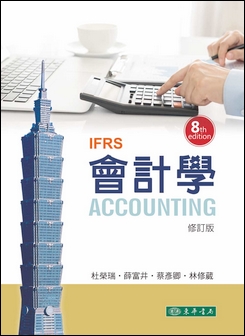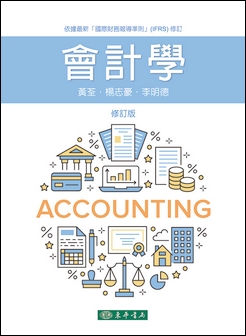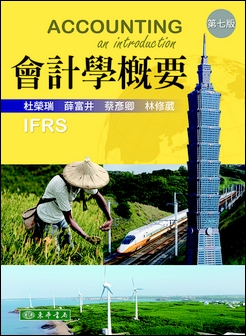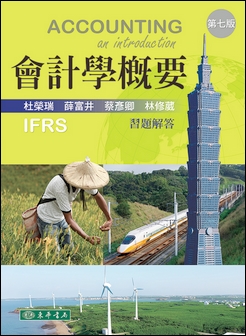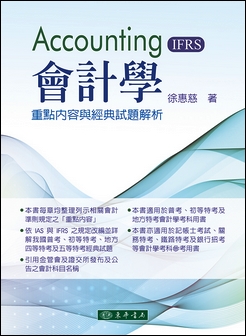書籍分類
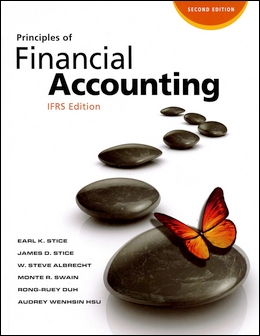
Principles of Financial Accounting 2/e IFRS Edition
作者:Earl K. Stice, James D. Stice, W. Steve Albrecht, Monte R. Swain, Rong-Ruey Duh, Audrey Wenhsin Hsu
原價:NT$ 1,410
ISBN:9789814780674
版次:2
年份:2017
出版商:Cengage Learning
版次:2
年份:2017
出版商:Cengage Learning
內容介紹 目錄 作者介紹
- FEATURES
- We incorporate the latest IFRS amendments into this edition. Specifically, IFRS 9 (Classification of Financial Instruments) and IFRS 15 (Revenue from Contracts with Customers) will become effective beginning on or after January 1 2018. IFRS 15, in a major overhaul of rules on revenue recognition, will replace IAS 18 (Revenue) and IAS 11 (Construction Contracts). It establishes a contract-based approach to determine the recognition and measurement of revenue. IFRS 9 will replace IAS 39 (Financial Instruments) and contains new requirements on the classification and measurement of financial assets. We substantially revise Chapter 6 (Receivables) and Chapter 12 (Investments) to incorporate IFRS 15 and IFRS 9, respectively.
- In each chapter, we update the real world examples by using the latest financial statements that are publicly available when we undertake the revision project. The appendices (TSMC, Philips, and Carrefour) are all updated in this way.
- We highlight the illustrated examples to help the readers more easily to get the main idea points. We hope that this change will make this book more reader friendly.
- We make the practices at the end of each section more clearly. Practicing after each section is an effective way of learning. In the first edition, this series of practices were labeled “Do This” but some users of our book may have skipped it. In the second edition, we make them easier to identify and change the label to “QUIZ YOURSELF.” Take a break by practice before proceeding to the next section.
- We add/change the exercises and problems at the end of each chapter.
The second edition is featured by the following major changes:



